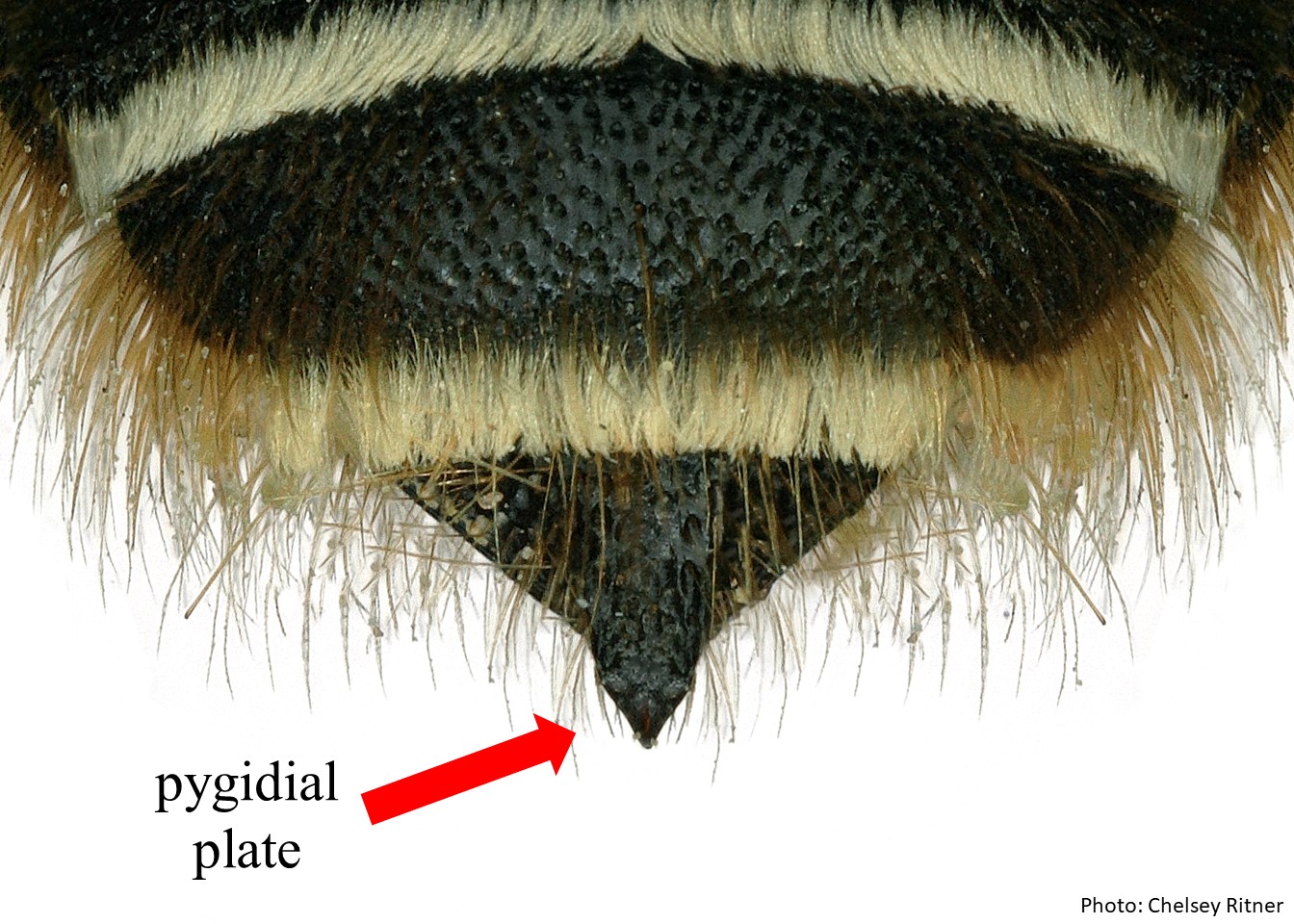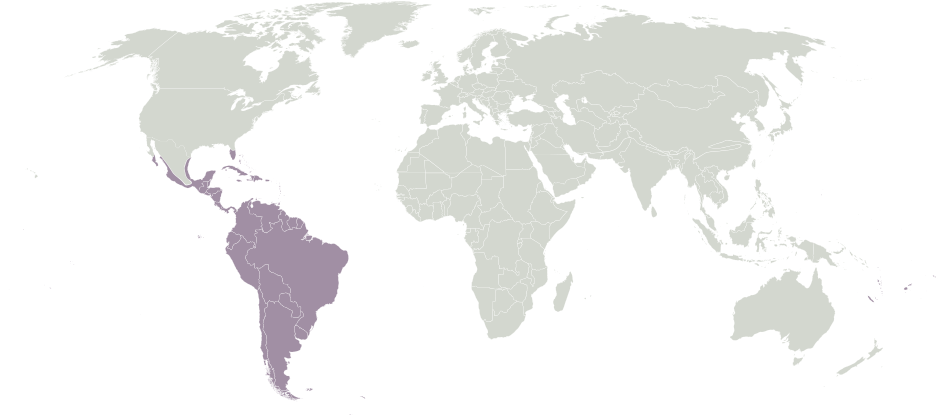Xylocopa (Dasyxylocopa) are small bees, 10 – 15 mm in length, with brilliantly metallic integumentintegument:
a tough, protective outer layer
. Males have thick, shaggy black pubescencepubescence:
short, fine hair
on their thorax, legs, and the underside of their abdomen and patches of white on the front leg to the underside of the head. Females are slightly less shaggy and tend to have a black to brownish black pubescencepubescence:
short, fine hair
. They have dark wings with violet iridescent color and amber tips (Hurd and Moure 1963Hurd and Moure 1963:
Hurd, P.D. and J.S. Moure. 1963. A Classification of the Large Carpenter Bees (Xylocopine) (Hymenoptera: Apoidea). University of California Publications in Entomology (Vol. 29). Berkeley and Los Angeles: University of California Press, 365 pp.).
Xylocopa (Dasyxylocopa) contains 3 species (Melo 2017Melo 2017:
Melo, A. R. 2017. Revision of the carpenter bee subgenus Xylocopa ( Dasyxylocopa ) (Hymenoptera: Apidae). Journal of Natural History 51(7): 1-12.).
Xylocopa (Dasyxylocopa) can be found in southern Brazil, Paraguay, and Argentina (Michener 2007Michener 2007:
Michener, C.D. 2007. The Bees of the World (2nd ed.). Johns Hopkins University Press, Baltimore and London, 953 pp.).

Distribution map generated by Discover Life -- click on map for details, credits, and terms of use.
Xylocopa (Dasyxylocopa) bimaculata has been listed as an important pollinator for Trembleya laniflora (Soares and Morellato 2018Soares and Morellato 2018:
Soares N. C., and L. P. C. Morellato. 2018. Crepuscular pollination and reproductive ecology of Trembleya laniflora (Melastomataceae), an endemic species in mountain rupestrian grasslands. Flora 238: 138-147.) and several South American crop species including Coffee arabica (Araújo et al. 2010).
(modified from Hurd and Moure 1963Hurd and Moure 1963:
Hurd, P.D. and J.S. Moure. 1963. A Classification of the Large Carpenter Bees (Xylocopine) (Hymenoptera: Apoidea). University of California Publications in Entomology (Vol. 29). Berkeley and Los Angeles: University of California Press, 365 pp.)
 with three tubercles.
with three tubercles. with subapicalsubapical:
with subapicalsubapical:Xylocopa (Dasyxylocopa) has been observed to nest in the stems and branches of species in the Styracaceae family (Schlindwein 1998Schlindwein 1998:
Schlindwein, C. 1998. Frequent oligolecty characterizing a diverse beendash;plant community in a xerophytic bushland of subtropical Brazil. Studies on Neotropical Fauna and Environment 33(1): 46-59.).
There are no known invasives.
Araújo, V. A., A. P. A. Araújo, and Y. A. Itabaiana. 2010. Impact of resource availability on bee diversity. Sociobiology 55: 1-13.
Hurd, P.D. and J.S. Moure. 1963. A Classification of the Large Carpenter Bees (Xylocopine) (Hymenoptera: Apoidea). University of California Publications in Entomology (Vol. 29). Berkeley and Los Angeles: University of California Press, 365 pp.
Keasar, T. 2010. Large Carpenter Bees as Agricultural Pollinators. Psyche doi:10.1155/2010/927463.
Melo, A. R. 2017. Revision of the carpenter bee subgenus Xylocopa (Dasyxylocopa) (Hymenoptera: Apidae). Journal of Natural History 51(7): 1-12.
Michener, C.D. 2007. The Bees of the World (2nd ed.). Johns Hopkins University Press, Baltimore and London, 953 pp.
Schlindwein, C. 1998. Frequent Oligolecty Characterizing a Diverse Bee–Plant Community in a Xerophytic Bushland of Subtropical Brazil. Studies on NeotropicalNeotropical:
biogeographic region that includes South and Central America, the Caribbean Islands, southern Florida, and the southern Mexican lowlands Fauna and Environment 33(1): 46-59.
Fauna and Environment 33(1): 46-59.
Soares N. C., and L. P. C. Morellato. 2018. Crepuscular pollination and reproductive ecology of Trembleya laniflora (Melastomataceae), an endemic species in mountain rupestrian grasslands. Flora 238: 138-147.